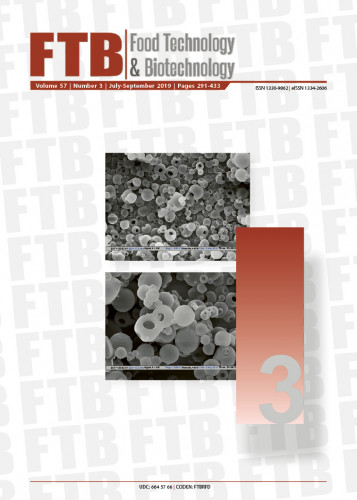Different soybean products are considered as traditional functional food among the Mongolian population in Northeast India. In the present study, the effect of different flavours (mango, orange, vanilla and white rose), inoculation rates of Lactobacillus rhamnosus K4E (KX950834) and Lactobacillus helveticus K14 (KU644578), and mass fractions of skimmed milk and sugar on the acceptability of soy yoghurts was studied. Physicochemical (pH, titratable acidity) and microbial analyses (total bacterial, total coliform, yeast and mould count) were conducted, and organoleptic (aroma, taste, colour, mouthfeel, texture and overall acceptability) and biofunctional properties (angiotensin-converting enzyme (ACE) inhibitory activity, antioxidant and antimicrobial activities and biotransformation of isoflavones) were evaluated during storage up to 10 days under refrigeration conditions (6–8 °C). Panellists preferred white rose soy yoghurt more than other flavours. The pH was from 5.65 to 4.20, the titratable acidity (expressed as mass fraction of lactic acid) was from 0.33 to 0.51 % and total Lactobacillus count ranged from 6.81 to 8.69 log CFU/mL during storage. The ACE inhibitory activity increased from 21.17 % on day 0 to 81.03 % on day 5, followed by a decrease of the activity after 10 days (38.85 %). The antioxidant activity was the highest on day 5 (87 %). White rose soy yoghurt had the highest antimicrobial activity against Listeria monocytogenes, followed by Bacillus subtilis, Staphylococcus aureus, Salmonella typhi and Escherichia coli. RP-HPLC analysis showed that after 18 h, the production of soy isoflavone aglycones genistein and daidzein in yoghurt was 87.3 and 58.4 %, respectively.; Različiti proizvodi od soje smatraju se tradicionalnom funkcionalnom hranom za mongolsku populaciju na sjeveroistoku Indije. U ovom je radu ispitan utjecaj dodatka različitih aroma (mango, naranča, vanilija i bijela ruža), stupnja inokulacije bakterijama mliječno-kiselog vrenja Lactobacillus rham¬nosus K4E (KX950834) i Lactobacillus helveticus K14 (KU644578) i masenih udjela obranog mlijeka i šećera na senzorne značajke sojinog jogurta. Tijekom deset dana skladištenja u hladnjaku pri 6-8 °C ispitivana su fizikalno-kemijska (pH-vrijednost, titracijska kiselost), mikrobiološka (ukupni broj bakterija te broj koliformnih bakterija, kvasaca i plijesni), organoleptička (aroma, okus, boja, punoća, tekstura i ukupna prihvatljivost) i biofunkcionalna (inhibicija proizvodnje angiotenzin konvertirajućeg enzima, antioksidacijski i antimikrobni učinak, biotransformacija izoflavona) svojstva jogurta. Najbolje je ocijenjen jogurt s aromom bijele ruže, čija je pH-vrijednost tijekom skladištenja bila od 5,65 do 4,20, titracijska kiselost (izražena kao maseni udjel mliječne kiseline) od 0,33 do 0,51 % i ukupni broj bakterija vrsta Lactobacillus od 6.81 do 8,69 log CFU/mL. Inhibicija se angiotenzin konvertirajućeg enzima povećavala tijekom skladištenja s početnih 21,17 % na 81,03 % izmjerenih tijekom petog dana skladištenja, a zatim smanjivala sve do 38,85 % nakon desetog dana. Najveća je antioksidacijska aktivnost zabilježena tijekom petog dana skladištenja (87 %).
Sažetak

 Food technology and biotechnology : journal of the Faculty of Food Technology and Biotechnology, University of Zagreb, Zagreb, Croatia : 57,3(2019) / editor-in-chief Vladimir Mrša.
Food technology and biotechnology : journal of the Faculty of Food Technology and Biotechnology, University of Zagreb, Zagreb, Croatia : 57,3(2019) / editor-in-chief Vladimir Mrša.